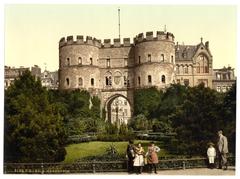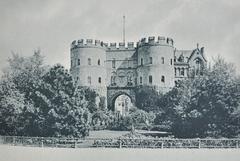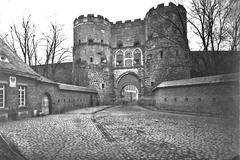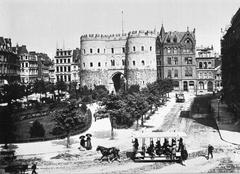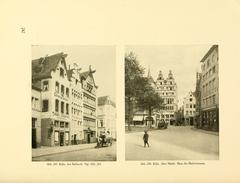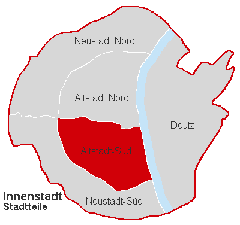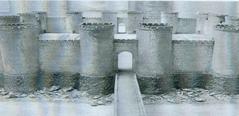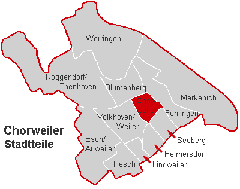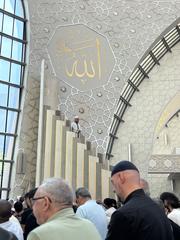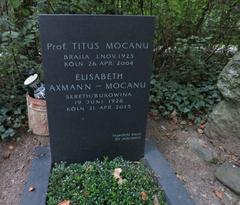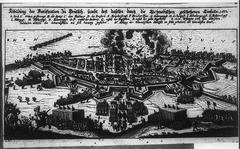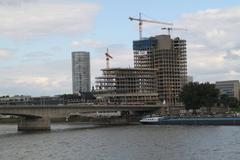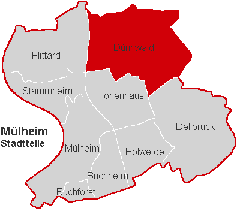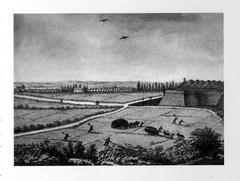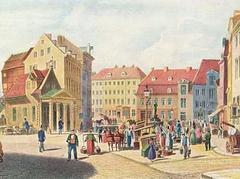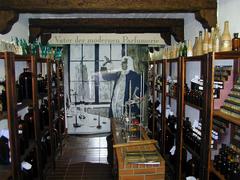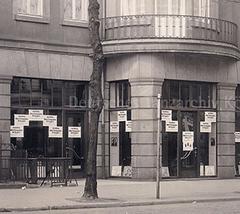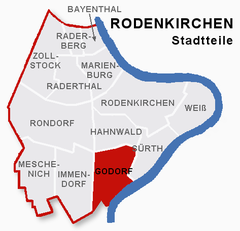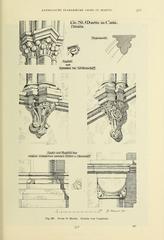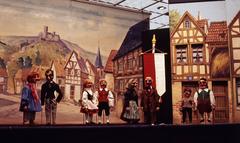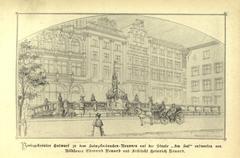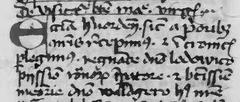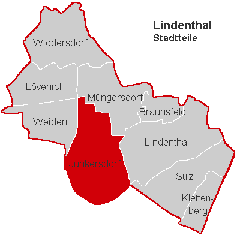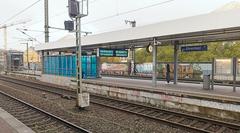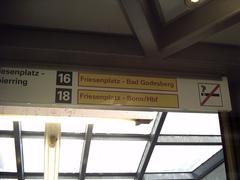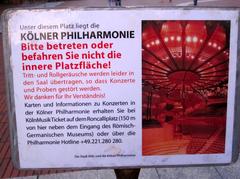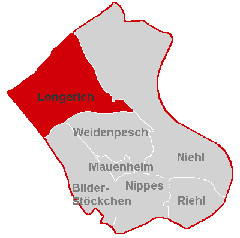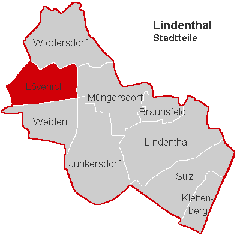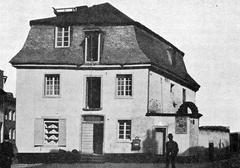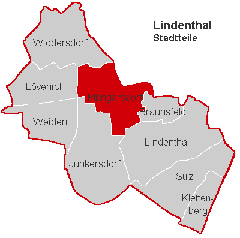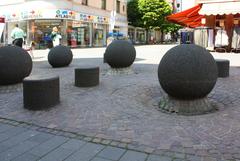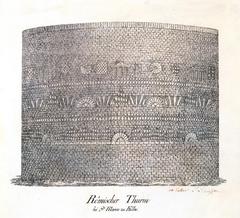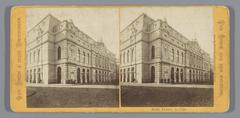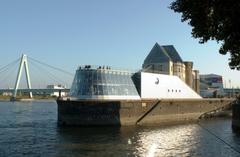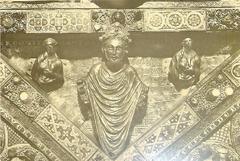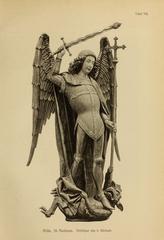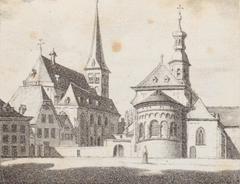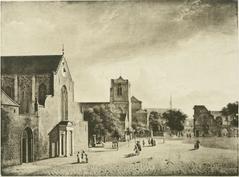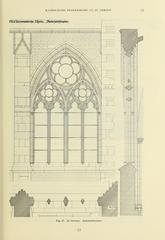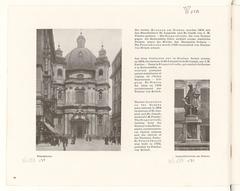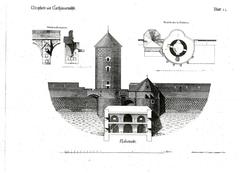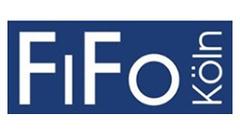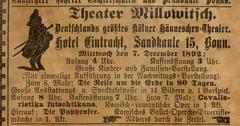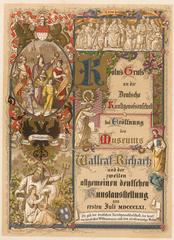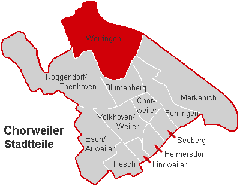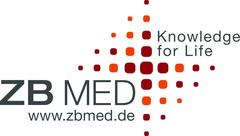
Visiting Hours, Tickets, and Historical Insights of Hahnentorburg, Cologne
Date: 24/07/2024
Introduction
The Hahnentorburg, also known as the Hahnen Gate, is one of Cologne, Germany’s most iconic historical structures. Built between 1235 and 1240, this medieval gate is a testament to the city’s rich heritage and architectural prowess. As one of the twelve monumental gates that once surrounded Cologne, Hahnentorburg showcases a unique blend of Romanesque and Gothic architectural styles, featuring intricately carved stone facades depicting biblical scenes and Cologne’s history (Spotting History, In Germany Wiki, A View on Cities).
Visitors to Hahnentorburg can explore its historical significance and cultural symbolism, as the gate continues to inspire artists and host cultural events like the annual Cologne Carnival. Located in Cologne’s Old Town, Hahnentorburg offers a range of visitor-friendly amenities, including guided tours, accessibility features, and proximity to other notable attractions like the Cologne Cathedral and the Roman-Germanic Museum. This guide covers everything you need to know about visiting Hahnentorburg, from its historical background and architectural significance to practical visitor information and travel tips. Whether you’re a history enthusiast or a casual traveler, Hahnentorburg promises a memorable and enriching experience (Hues of Delahaye, Solo Sophie, Collective Travel Guides, Germany Travel Blog).
Table of Contents
- Introduction
- Historical Background
- Visitor Information
- Guided Tours and Self-Guided Walks
- Nearby Attractions
- Special Events and Photographic Spots
- FAQ Section
- Conclusion
Historical Background
Origins and Construction
The Hahnentorburg’s origins date back to the 13th century, specifically between 1235 and 1240, when it was constructed as part of Cologne’s medieval fortifications. The gate was named after a local citizen named Hageno, and over time, the name evolved into Hahnentor, meaning “rooster gate” (Spotting History).
Architectural Significance
Hahnentorburg showcases a blend of Romanesque and Gothic styles. Its design features two semicircular, crenelated towers typical of medieval fortifications. Intricate stone carvings adorn the gate’s facade, depicting scenes from the Bible and Cologne’s history (In Germany Wiki).
Role in Medieval Cologne
During medieval times, Hahnentorburg was crucial for the city’s defense and commerce. It was one of twelve monumental gates in Cologne’s 7-meter-high wall, the largest city wall in Germany at the time. The wall surrounded Cologne in a semicircle and bordered the Rhine River at its northern and southern ends (A View on Cities). The gate’s strategic location along important trade routes made it a bustling hub of commercial activity (In Germany Wiki).
Royal Significance
Hahnentorburg also held royal significance. After their coronation in Aachen, German kings would arrive in Cologne through this gate to revere the shrine of the Three Magi in the Cologne Cathedral. This tradition underscored the gate’s importance as a defensive, commercial, and symbolic structure (A View on Cities).
Evolution and Preservation
As Cologne expanded, Hahnentorburg became a symbol of the city’s growth and prosperity. It marked the boundary between the old town and newly developed areas. In 1881, the medieval wall was demolished to make way for a new ring boulevard, but many towers and gates, including Hahnentorburg, were preserved (A View on Cities).
Cultural Symbolism
Hahnentorburg stands as a testament to Cologne’s rich history and enduring cultural significance. It embodies the city’s pride, independence, and resilience. The gate has inspired artists, writers, and musicians, and continues to be a focal point for cultural events like the annual Cologne Carnival (In Germany Wiki).
Visitor Information
How to Get There
Hahnentorburg is prominently located at the end of Hahnenstraße in Cologne’s Old Town. The nearest U-Bahn station is “Heumarkt,” a short walk from the gate. Visitors can also take buses 132 or 133 and alight at the “Hahnenstraße” stop, right outside the gate (In Germany Wiki).
Opening Hours
The gate is open to the public from April to September between 10 am and 6 pm, and from October to March between 10 am and 4 pm (In Germany Wiki).
Ticket Prices
Entrance fees are €3 for adults, while children aged 6-18 years can enter for €1. A family ticket for two adults and two children is available for €6 (In Germany Wiki).
Accessibility
The gate is accessible by wheelchair via a ramp, ensuring that all visitors can explore this historical landmark (In Germany Wiki).
Guided Tours and Self-Guided Walks
Visitors are encouraged to join a guided tour or embark on a self-guided walk to fully appreciate Hahnentorburg’s historical significance. These tours provide an in-depth exploration of the gate’s role in Cologne’s medieval past (In Germany Wiki).
Nearby Attractions
While in Cologne, visitors can also explore other historical sites such as the Cologne Cathedral, the Roman-Germanic Museum, and the Old Town Hall. These attractions offer a deeper insight into the city’s rich history.
Special Events and Photographic Spots
Hahnentorburg hosts various cultural events, including the Cologne Carnival and historical reenactments. The gate’s majestic presence makes it a perfect spot for photography. Capture its beauty from different angles to create lasting memories.
FAQ Section
Q - What are the visiting hours for Hahnentorburg?
A - The gate is open from April to September between 10 am and 6 pm, and from October to March between 10 am and 4 pm.
Q - How much are tickets for Hahnentorburg?
A - Tickets are €3 for adults, €1 for children aged 6-18 years, and €6 for a family ticket.
Q - Is Hahnentorburg accessible for visitors with mobility issues?
A - Yes, Hahnentorburg is accessible with paved pathways and ramps. However, some areas, especially the towers, may have limited accessibility.
Q - What nearby attractions can I visit?
A - Nearby attractions include the Church of Saint Andrew and the Cologne Cathedral, both offering rich historical and cultural experiences.
Conclusion
Hahnentorburg stands as more than just a historical monument; it is a gateway to understanding Cologne’s medieval past and cultural richness. The gate’s architectural beauty, combined with its historical and royal significance, makes it a must-visit for anyone exploring Cologne. From its origins in the 13th century to its role in modern cultural events, Hahnentorburg embodies the spirit of Cologne’s resilience and independence. Visitors can enjoy a range of experiences, from guided tours and photography opportunities to nearby attractions like the Cologne Cathedral and the Roman-Germanic Museum. The gate’s accessibility and visitor-friendly amenities ensure that everyone can appreciate this historical treasure. As you plan your visit, consider timing it with special events like the Cologne Carnival or the Christmas market for an even more memorable experience. By immersing yourself in the history and culture surrounding Hahnentorburg, you will gain a deeper appreciation for the enduring legacy of this iconic gate and the beautiful city of Cologne (Spotting History, In Germany Wiki, A View on Cities, Hues of Delahaye, Solo Sophie, Collective Travel Guides, Germany Travel Blog).
References
- Spotting History, n.d., https://www.spottinghistory.com/view/7651/hahnen-gate/
- In Germany Wiki, n.d., https://ingermany.wiki/cologne/hahnentorburg/
- A View on Cities, n.d., https://aviewoncities.com/cologne/hahnentorburg
- Hues of Delahaye, n.d., https://www.huesofdelahaye.com/hidden-things-to-do-in-cologne-germany/
- Solo Sophie, n.d., https://www.solosophie.com/hidden-gems-secret-spots-in-cologne/
- Collective Travel Guides, n.d., https://collectivetravelguides.com/cologne-christmas-market-guide/
- Germany Travel Blog, n.d., https://germanytravel.blog/cities/cologne/things-to-do/one-day-itinerary/



